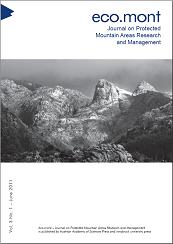
Eco.mont Vol. 3 Nr. 1, pp. 29-36, 2011/05/20
Journal on Protected Mountain Areas Research and Management

The management of protected areas has recently emerged as a new scientific discipline. To date, there is a lack of systematic and theoretical background. This study explored this vast field by combining different disciplines in an inter- and transdisciplinary approach. Taking two existing Austrian biosphere reserves (Großes Walsertal BR, Wienerwald BR) and one national park (Nockberge NP, BR planned) as typical examples, we analysed basic management principles in terms of intervention, participation, regional governance and change management. The broad base and special methodological approach showed the complexity of planning and managing a biosphere reserve. How local stakeholders perceive the process of development very often differs from what the planning regime was meant to do. The overwhelming importance of regional history, the power of established structures and social components (trust, enthusiasm etc.) can turn planning intentions into an unpredictable direction. Only a precise and focused strategic mix of process components can ensure a successful process. What constitutes an effective mix differs from region to region and must be defined individually. It also became clear that different phases of BR development need specific management approaches as intervention takes place in a typical order. Once again, proper participation proved crucial for the success of a BR.
Keywords: biosphere-reserve protected-area-management planning intervention participation governance change management